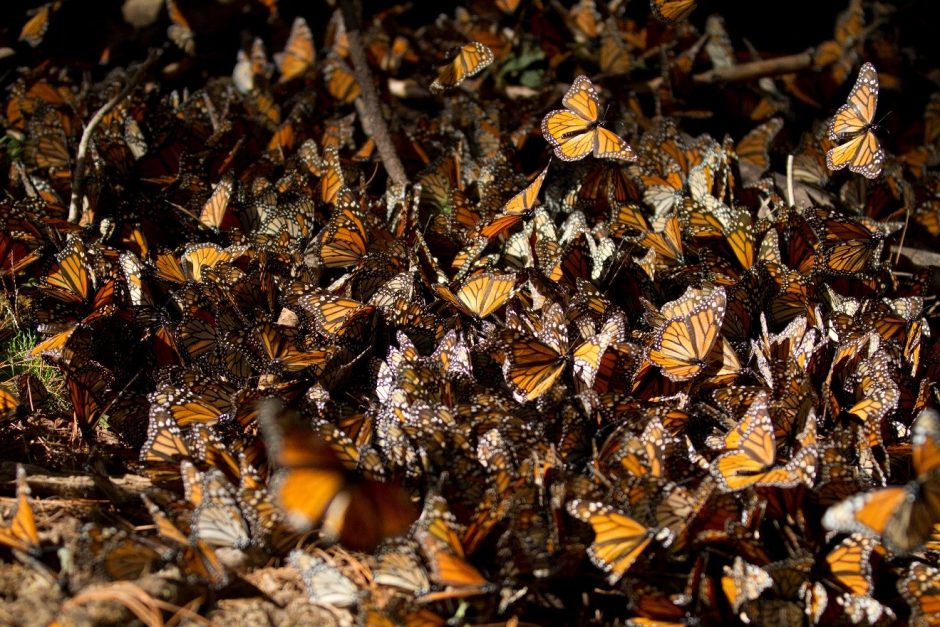
5 Tips on How to Get this Photo: Monarch butterflies flying
Photographing monarch butterflies as they burst from Oyamel fir trees is no easy feat. However, if you have the opportunity to travel to Michoacan in search of these regal insects, you’ll likely get the chance to photograph this moment.
Because such a moment can be fleeting and unpredictable, not to mention the fact that witnessing it will leave you breathless, you’ll need to prepare yourself to snap the photo the instant you get the chance.

1) Get your camera ready to shoot in burst mode.
Different cameras handle this in a variety of ways, so check your camera’s user guide before you leave for the trip. Or better yet, take the instruction manual along with you. Most cameras can shoot between 3 and 6 photos per second, with very high end cameras capable of shooting 8+ “frames per second” or FPS.
2) Make sure your camera is set for fast motion subjects.
On many point and shoot cameras there is a small logo of a running man to symbolize sports photography. This is a shortcut way to tell your camera you want to “freeze motion” in your photos of moving objects. If you have a DSLR, or wish to program your camera, you’ll need to set your camera on shutter speed priority, oven denoted by a Tv or S letter on the custom settings wheel of the camera.
Because there is often ample light in the butterfly sanctuaries, you can shoot very quickly — at a fast shutter speed. But how fast is fast enough? Glad you asked! I would recommend shooting at least at 1/1000th of a second, often denoted on your camera as just 1000, or 1/1000.
3) Pick a focus point and have a wide depth of field
When you need to shoot something quickly and without much notice, it can be troublesome to wait for your camera to auto focus. Thus, pick your spot ahead of time and set your camera on manual focus, which locks in the focus you just let your camera autofocus on. As long as you don’t touch the focusing ring, your camera will stay focused for that exact same distance. The adjust for any slight movement that either you or your flying monarchs may make, set your camera on a reasonably wide depth of field — perhaps f/8 or f/9. While this will reduce the amount of light getting to your camera’s sensor, you can compensate for this by adjusting your ISO. But, this wide depth of field will give you some room for error if you don’t get the focus perfectly.
4) Once setting your shutter speed, check your ISO.
By shooting in this custom setting, your camera now allows you (or more properly, makes you) choose an ISO setting. However, for the sake of this blog, you’ll want to either set it at ISO Auto, ISO Auto High, or dial in a number yourself. Different camera models yield different results when you test the limits with high ISOs, so my baseline is to not go above ISO 400. However, if you want to experiment a little, try ISO 800. Just keep in mind that an ISO 800 photo will have more “grain” in it that could leave the photo a bit less quality than you’d hoped.
If you have a relatively high-end camera, you might be able to shoot at ISO 1600 or even higher with perfectly satisfactory results. But it’s truly best to be conservative with this, especially since the high amount of light will likely allow fast shutter speeds regardless.
5) Be patient and wait for that golden moment.
Fortunately, these same settings are ideal for most any photo in the monarch sanctuaries, as many butterflies are moving constantly. Even a simple wing beat needs a fast shutter speed, so keep your camera on these settings and be vigilant. Often getting that perfect shot means you have to be ready to take the photo only one or two seconds after they begin to take flight.
Go forward and give it a shot,
Leave a reply